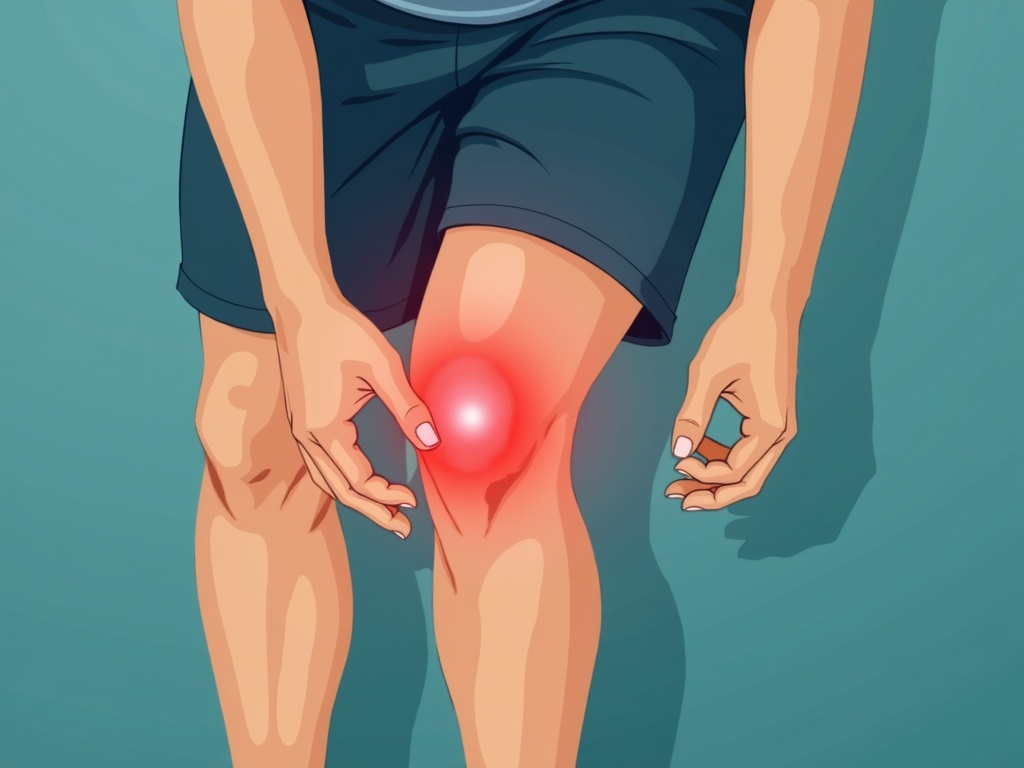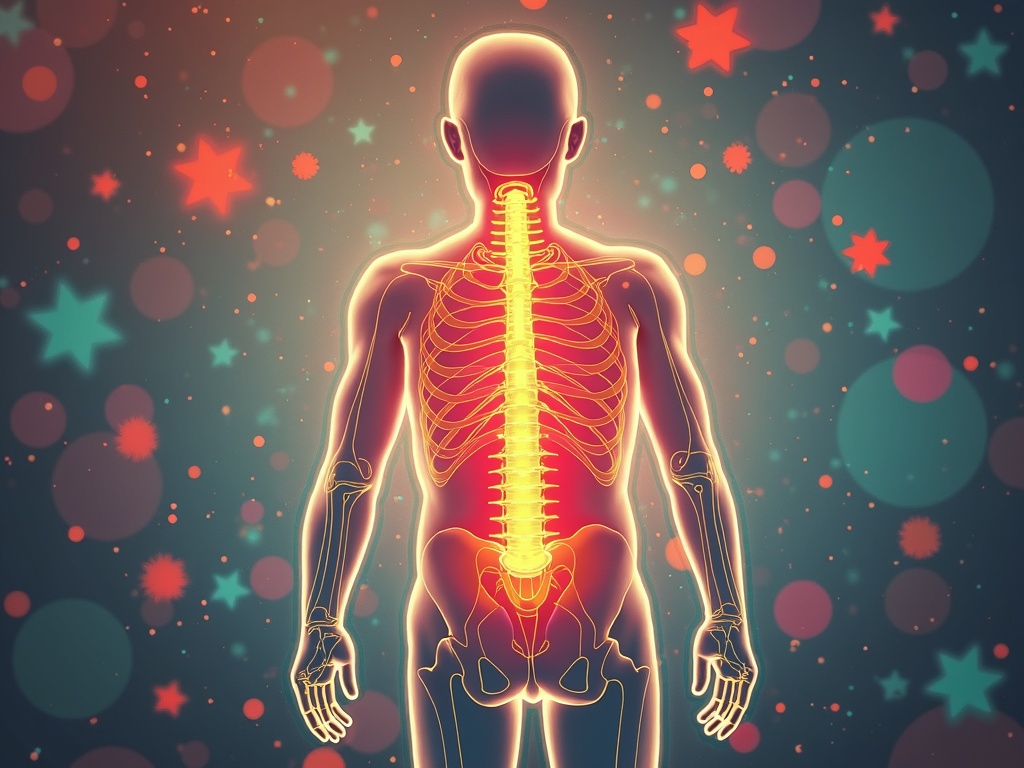Unlock Relief: Acupressure Points for Soothing Knee Pain
That grinding, aching, throbbing…knee pain. It's a reality for millions, from athletes pushing their limits to those feeling the effects of time and wear. Before you reach for the medicine cabinet, consider an ancient technique that might offer surprising relief: acupressure. This self-healing method, rooted in Traditional Chinese Medicine, involves stimulating specific points on the body to alleviate pain and promote overall well-being. Let's explore how you can harness the power of acupressure to target knee pain and get back on your feet – literally.
Understanding Acupressure and Knee Pain
Acupressure operates on the principle that vital energy, known as Qi (pronounced chee), flows through pathways called meridians in the body. When these pathways become blocked or stagnant, pain and illness can arise. By applying pressure to specific acupressure points along these meridians, we can help to restore the natural flow of Qi, thereby relieving pain and promoting healing.
Knee pain can stem from various causes, including:
- Osteoarthritis: The breakdown of cartilage in the knee joint.
- Injuries: Sprains, strains, meniscus tears, and ligament damage.
- Bursitis: Inflammation of the fluid-filled sacs (bursae) that cushion the knee joint.
- Tendonitis: Inflammation of the tendons around the knee.
- Rheumatoid Arthritis: An autoimmune disease causing joint inflammation.
While acupressure may not be a cure-all for all these conditions, it can be a valuable complementary therapy to manage pain and improve mobility. Remember to consult with your doctor or a qualified healthcare professional for a proper diagnosis and treatment plan.
Locating and Stimulating Key Acupressure Points for Knee Pain
Ready to give acupressure a try? Here are some of the most effective acupressure points for knee pain, along with instructions on how to locate and stimulate them:
1. Stomach 36 (Zu San Li)
Location: This point is located about four finger widths below the kneecap, on the outside of the shinbone. To find it easily, place your hand on your kneecap with your fingers pointing down. The point lies where your pinky finger rests.
How to Stimulate: Use your thumb or forefinger to apply firm, steady pressure to this point. You can massage it in a circular motion for 2-3 minutes. This point is known for its ability to strengthen the body and reduce pain, including knee pain.
2. Spleen 9 (Yinlingquan)
Location: Located on the inside of the lower leg, just below the knee. Find the bony prominence on the inside of your shinbone (tibia). Slide your finger down from the prominence, and you'll find a depression. This is Spleen 9.
How to Stimulate: Apply firm, steady pressure to this point for 2-3 minutes, massaging in a circular motion. This point helps to reduce swelling and pain in the knee, especially when caused by dampness or fluid retention.
3. Liver 8 (Ququan)
Location: With your knee bent, this point is located on the inside of your knee crease. Find the end of the crease when the knee is flexed.
How to Stimulate: Apply firm, steady pressure, massaging in a circular motion, for 2-3 minutes. This point is helpful for knee pain related to tendon and ligament issues, and also benefits overall joint health.
4. Gallbladder 34 (Yanglingquan)
Location: Located on the outside of the lower leg, just below and in front of the head of the fibula (the smaller bone of the lower leg). Feel for a depression in front of and below the small head of the fibula.
How to Stimulate: Apply firm, steady pressure, massaging in a circular motion, for 2-3 minutes. This point is known for its ability to relax tendons and muscles, making it effective for knee pain caused by stiffness or tightness.
5. Kidney 10 (Yingu)
Location: Located on the inside of the knee crease, towards the inner side of the leg. It's roughly in line with Liver 8, but slightly lower and more towards the back of the knee.
How to Stimulate: Use your thumb to apply firm, steady pressure to this point for 2-3 minutes, massaging gently. This point can help alleviate knee pain associated with weakness or deficiency.
Acupressure Techniques and Tips for Effective Relief
To maximize the benefits of acupressure for knee pain, keep these tips in mind:
- Find a Comfortable Position: Sit or lie down in a relaxed position where you can easily reach the acupressure points on your knee and lower leg.
- Use Proper Pressure: Apply firm, steady pressure, but avoid pressing so hard that it causes pain. The pressure should be deep but comfortable.
- Breathe Deeply: Focus on your breath as you stimulate the acupressure points. Deep, slow breaths can help to relax your muscles and enhance the flow of Qi.
- Be Consistent: For best results, practice acupressure regularly, ideally once or twice a day.
- Listen to Your Body: If you experience any discomfort or increased pain, stop immediately and consult with a qualified acupressure practitioner or healthcare provider.
Combining Acupressure with Other Therapies
Acupressure can be a powerful tool on its own, but it can also be effectively combined with other therapies to enhance pain relief and promote healing. Consider these complementary approaches:
- Massage Therapy: Gentle massage around the knee can help to relax muscles, improve circulation, and reduce pain.
- Physical Therapy: Exercises and stretches prescribed by a physical therapist can strengthen the muscles around the knee, improve stability, and reduce strain on the joint.
- Heat and Cold Therapy: Applying heat or cold to the knee can help to reduce inflammation and pain. Use ice for acute injuries and heat for chronic pain.
- Herbal Remedies: Certain herbs, such as turmeric and ginger, have anti-inflammatory properties that may help to alleviate knee pain. Consult with a qualified herbalist or healthcare provider before using herbal remedies.
- Acupuncture: Similar to acupressure, acupuncture involves stimulating specific points on the body, but uses thin needles instead of pressure. Many people find acupuncture to be effective for managing knee pain.
When to Seek Professional Help
While acupressure can be a helpful tool for managing knee pain, it's essential to seek professional medical advice if you experience any of the following:
- Severe pain that doesn't improve with home treatment.
- Sudden swelling, redness, or warmth in the knee.
- Inability to bear weight on the affected leg.
- Deformity of the knee joint.
- Fever or other signs of infection.
- Numbness or tingling in the leg or foot.
These symptoms may indicate a more serious condition that requires medical attention. A healthcare provider can properly diagnose the cause of your knee pain and recommend the most appropriate treatment plan.
Embrace the Power of Acupressure
Knee pain doesn't have to rule your life. By learning and practicing these acupressure techniques, you can take control of your pain management and experience greater comfort and mobility. Remember to be patient, consistent, and listen to your body. With regular practice and a holistic approach to healing, you can unlock the power of acupressure and reclaim your active lifestyle.


